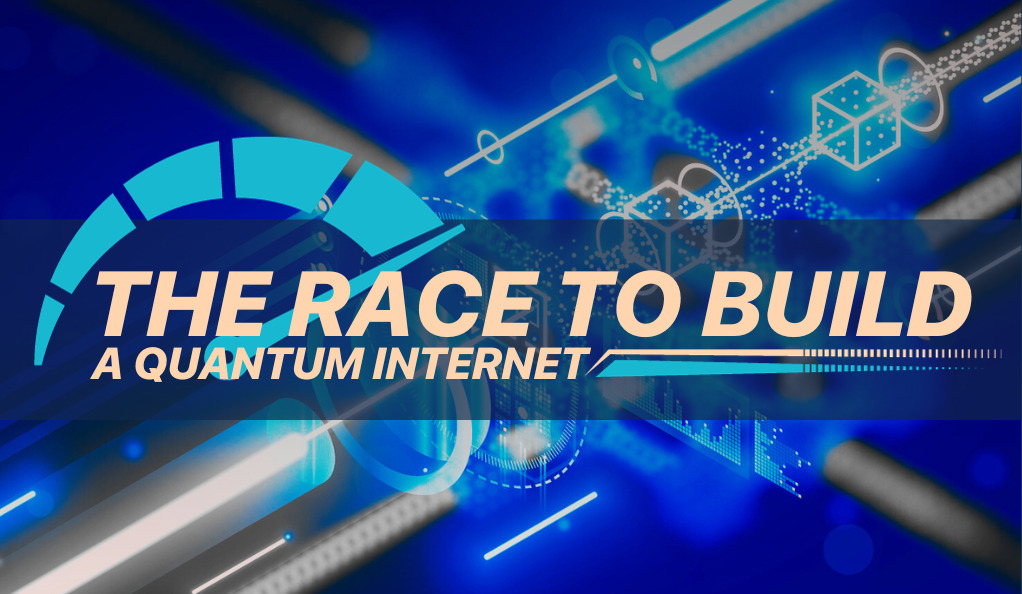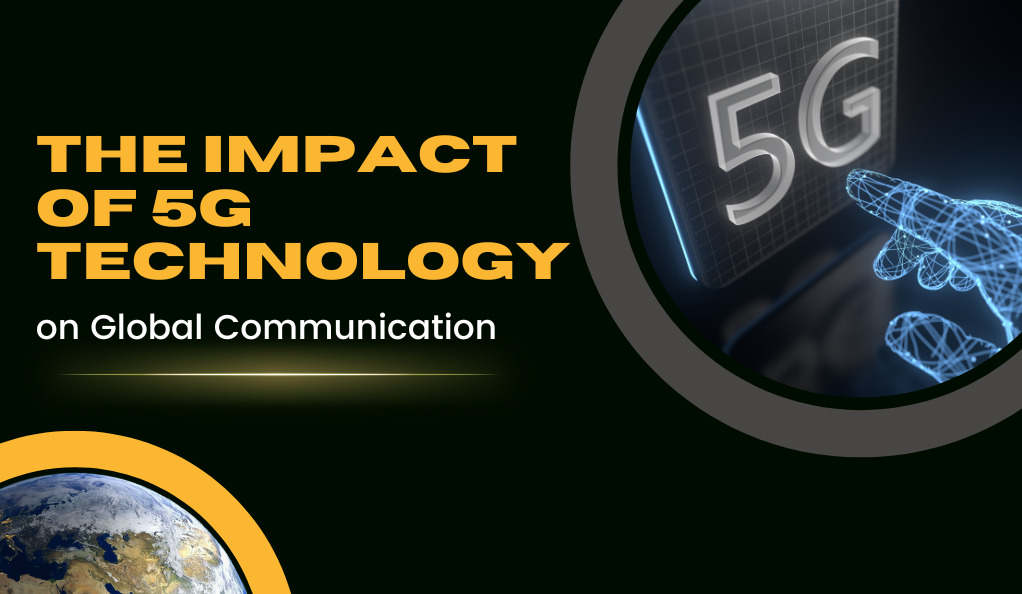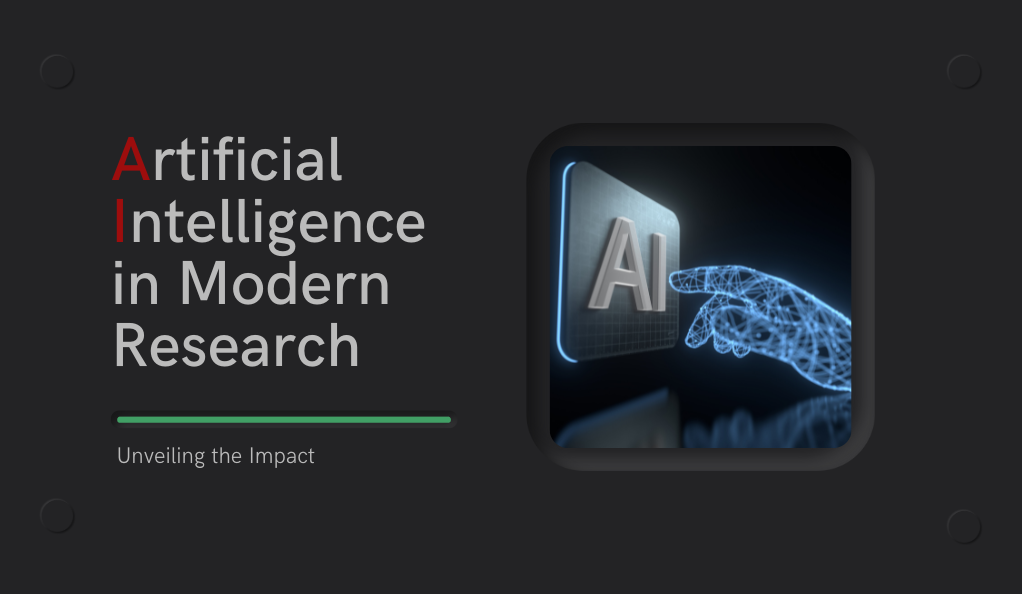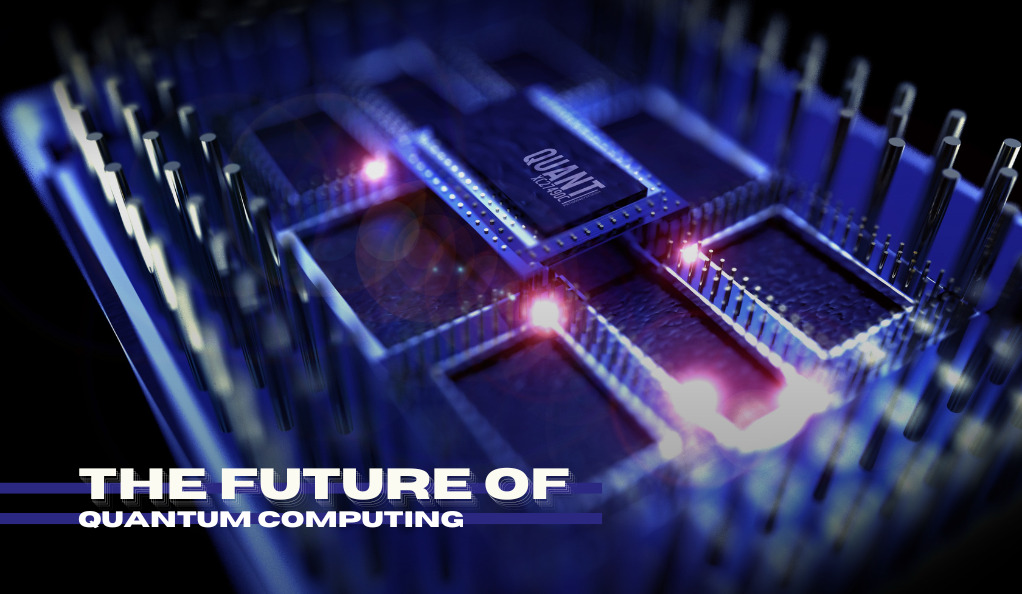In the realm of technological advancements, the quantum revolution stands poised to redefine our understanding of information transfer and security. Just as classical computers once seemed a fantasy, today’s race to build a quantum internet promises to usher in a new era of communication, far surpassing the capabilities of our current networks.
What is a Quantum Internet?
At its core, a quantum internet would harness the principles of quantum mechanics to transmit information. Unlike classical bits, which are either 0s or 1s, quantum bits (or qubits) can exist in a superposition of states. This means they can represent both 0 and 1 simultaneously. This unique property, combined with the phenomenon of quantum entanglement, where qubits become interconnected and can instantaneously influence one another regardless of distance, offers unprecedented advantages in speed, security, and computational power.
Why is it Revolutionary?
- Unparalleled Security: One of the most touted benefits of a quantum internet is its potential for ultra-secure communication. Due to the fundamental properties of quantum mechanics, any attempt to eavesdrop on a quantum communication would disturb the qubits and be immediately noticeable. This promises almost unhackable communication channels, a boon in our age of cyber threats.
- Computational Power: Quantum networks would allow for quantum computations to be distributed across vast distances, enabling complex problems to be solved in fractions of the time it would take even the most advanced classical computers.
- Enhanced Communication: With the ability to transmit vast amounts of data using superposition and entanglement, quantum networks could handle the ever-growing global demand for bandwidth and data transfer with ease.
| Comparison | Classical Internet | Quantum Internet |
|---|---|---|
| Basic Unit | Bit (0 or 1) | Qubit (0, 1, or both) |
| Security | Encryption-based | Quantum Mechanics-based |
| Computational Power | Limited by hardware | Enhanced by quantum principles |
| Data Transmission | Binary | Superposition & Entanglement |
The Road Ahead
The race to build a quantum internet is more than just a technological challenge; it’s a journey to redefine the boundaries of communication. As researchers worldwide strive to overcome the hurdles of quantum mechanics and network infrastructure, we stand on the brink of a communication revolution that could shape the future of our digital world.
Basics of Quantum Networks
As we venture deeper into the realm of quantum communication, it’s essential to grasp the foundational principles that distinguish quantum networks from their classical counterparts. The world of quantum mechanics, with its counterintuitive phenomena, is the bedrock upon which these networks are built.
Classical vs. Quantum Networks
Classical networks, like the internet we use daily, rely on classical bits to transmit information. These bits, which can be either 0 or 1, travel through various channels like fiber optics or wireless mediums to reach their destination.
Quantum networks, on the other hand, utilize qubits. These quantum bits can exist in a superposition of states, allowing them to represent both 0 and 1 simultaneously. This property, when combined with quantum entanglement, provides quantum networks with their unique capabilities.
The Role of Quantum Bits (Qubits)
Qubits are the heart and soul of quantum networks. Their ability to exist in multiple states simultaneously is what gives quantum computers and networks their edge over classical systems.
- Superposition: Unlike classical bits, which must be either 0 or 1, qubits can be in a state that is a combination of both. This allows for more complex computations and data transmissions.
- Entanglement: Perhaps the most mysterious and fascinating property of qubits is their ability to become entangled. When two qubits are entangled, the state of one qubit instantly influences the state of the other, no matter the distance between them. This phenomenon is what Einstein famously called “spooky action at a distance.”
Quantum Networks in Action
Imagine sending a message using a quantum network. Instead of transmitting a series of 0s and 1s, the message would be sent using qubits in superposition. If someone tried to intercept this message, the very act of observing the qubits would alter their state, making eavesdropping detectable.
Furthermore, with the power of entanglement, two parties can share a pair of entangled qubits. Any change to the state of one qubit is instantly reflected in its entangled partner. This property can be used to create ultra-secure communication channels, where the mere act of interception would disrupt the communication and alert the parties involved.
The Potential and Promise
The capabilities of quantum networks extend far beyond secure communication. They hold the promise of revolutionizing fields like medicine, finance, and logistics by solving problems deemed unsolvable by classical computers. As we harness the power of quantum mechanics, we’re not just building a new internet; we’re paving the way for a quantum era.
Quantum Networks for Computation
The quantum realm is not just about communication; it’s also about harnessing unparalleled computational power. Quantum networks, when fully realized, will serve as the backbone for a new generation of quantum computers, enabling them to collaborate and solve problems that are currently beyond our reach.
Linking Quantum Processors
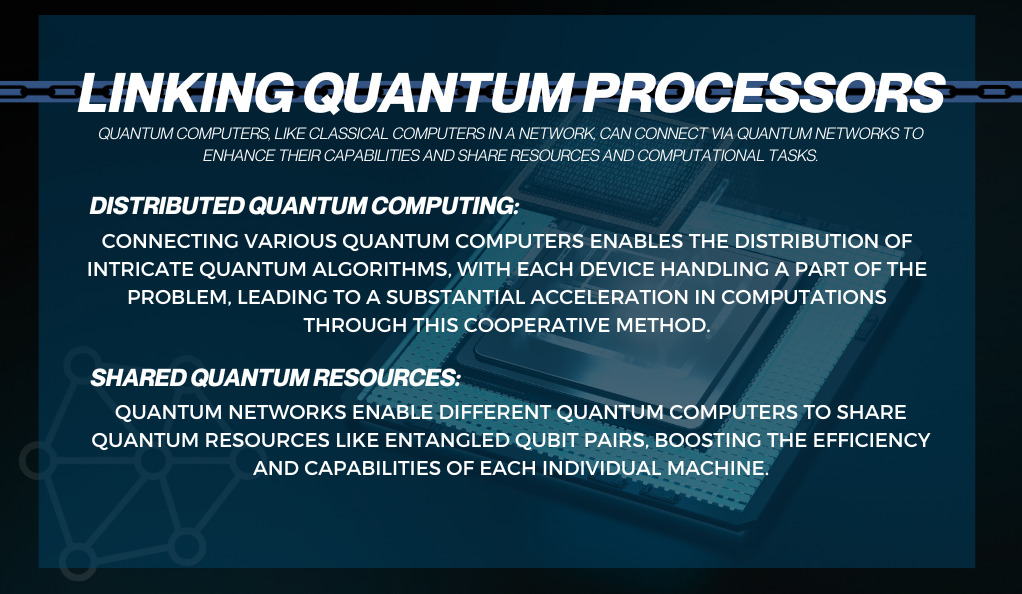
Just as classical computers in a network can share resources and computational tasks, quantum computers can be interconnected through quantum networks to amplify their capabilities.
- Distributed Quantum Computing: By connecting multiple quantum computers, we can distribute complex quantum algorithms, allowing each machine to work on a portion of the problem. This collaborative approach can significantly speed up computations.
- Shared Quantum Resources: Quantum networks can facilitate the sharing of quantum resources, such as entangled qubit pairs, among different quantum computers. This sharing can enhance the efficiency and capabilities of individual quantum machines.
Scalability of Quantum Networks
While the potential of quantum networks is vast, scaling them up to a global level presents significant challenges.
- Decoherence: Qubits are extremely sensitive to their environment. Over time and distance, they can lose their quantum properties, a phenomenon known as decoherence. This poses a challenge for long-distance quantum communication.
- Quantum Repeaters: To combat decoherence over long distances, researchers are working on developing quantum repeaters. These devices can extend the range of quantum communication by entangling qubits without directly transmitting them over the entire distance.
- Infrastructure Overhaul: Building a global quantum network requires a massive overhaul of our current communication infrastructure. From quantum routers to specialized quantum channels, the task is monumental but not insurmountable.
Quantum Cloud Computing
In the near future, we might not need personal quantum computers. Instead, quantum cloud platforms could offer individuals and businesses access to quantum computational power on demand. By connecting to the quantum network, users can run quantum algorithms, perform simulations, and access quantum data storage without owning a quantum machine.
The Quantum Advantage
The true power of quantum networks for computation lies in their ability to solve problems deemed impossible for classical computers. From simulating complex molecular structures to optimizing global logistics, the quantum advantage will redefine what’s computationally possible.
Quantum Networks for Communication
While the computational prowess of quantum networks is undeniably transformative, their potential for communication is equally groundbreaking. A quantum internet, built on the principles of quantum mechanics, promises to revolutionize how we transmit and secure information.
The Quantum Internet: Beyond Classical Boundaries
The concept of a quantum internet goes beyond merely speeding up data transfer. It’s about fundamentally changing the nature of communication:
- Ultra-Secure Communication: Quantum encryption, based on the principles of quantum key distribution (QKD), ensures that any attempt to intercept a message alters the quantum state of the transmitted qubits. This makes eavesdropping not only detectable but also virtually impossible to achieve without alerting the communicating parties.
- Instantaneous Data Transfer: Leveraging quantum entanglement, it’s theoretically possible to achieve faster-than-light communication. While this concept is still in its infancy and faces many challenges, the implications are profound.
- Dense Information Transfer: The ability of qubits to exist in superpositions allows for the transmission of vast amounts of data in a single quantum state, paving the way for incredibly dense information transfer.
Quantum Entanglement: The Heart of Quantum Communication
Entanglement is a cornerstone of quantum mechanics, where particles become interconnected in such a way that the state of one instantly influences the state of another, regardless of the distance between them. This phenomenon, often described as “spooky action at a distance,” is what makes quantum communication so revolutionary.
Through entanglement, researchers have achieved quantum teleportation, allowing the state of a qubit to be transferred from one location to another without the qubit itself physically moving. This breakthrough has vast implications for secure and instantaneous communication.
Challenges and Innovations
While the potential of a quantum internet is vast, its realization is riddled with challenges. One of the primary hurdles is maintaining the entangled state of qubits over long distances. As qubits are sensitive to their environment, external factors can easily disrupt their quantum states. To address this, researchers are developing quantum repeaters, devices that can extend the range of quantum communication.
Additionally, integrating quantum networks with existing classical networks is crucial for a seamless transition to a quantum internet. This integration requires innovations in both technology and protocols to ensure compatibility and efficiency.
Elements of a Quantum Network
To truly grasp the intricacies of a quantum network, it’s essential to understand its fundamental components. Just as the classical internet is built upon routers, servers, and data lines, the quantum internet will have its own unique infrastructure.
End Nodes: The Quantum Analog of Computers
End nodes in a quantum network are analogous to computers in a classical network. They are the devices that generate, process, and store quantum information.
- Quantum Computers: These are powerful machines capable of performing computations using the principles of quantum mechanics. They will serve as the primary users and beneficiaries of the quantum internet.
- Quantum Sensors: These devices can detect and respond to quantum signals, playing a crucial role in quantum communication and networking.
- Quantum Memory: Just as classical computers need RAM and storage, quantum devices require quantum memory to store qubit states temporarily.
Communication Lines: The Quantum Highways
The channels through which qubits travel are fundamentally different from classical data lines.
- Optical Networks: These use photons (light particles) to transmit qubits. Given that photons can travel long distances without much interference, they are ideal for quantum communication.
- Fiber Optic Networks: Already a backbone of the classical internet, fiber optics can also be used for quantum communication, especially over shorter distances.
- Free Space Networks: These involve transmitting qubits through open space, typically using lasers. They’re especially promising for satellite-based quantum communication.
Quantum Repeaters: Bridging Distances
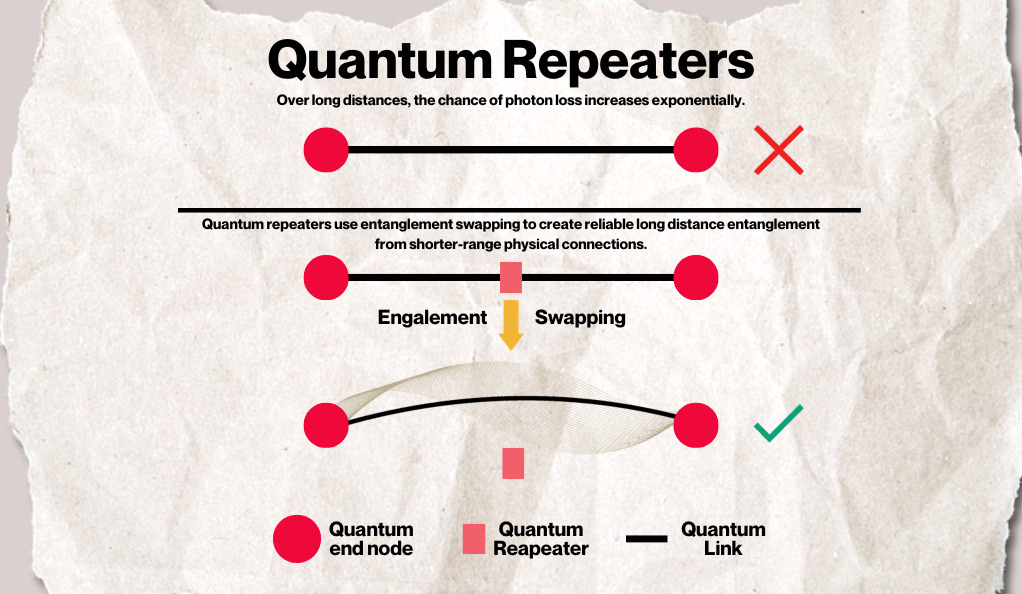
For quantum communication to be effective over long distances, the concept of amplifying a signal, as done in classical networks, isn’t feasible due to quantum mechanics’ no-cloning theorem. Instead, quantum repeaters come into play.
These devices extend the range of quantum communication by using a process called entanglement swapping, allowing qubits to remain entangled over vast distances. Furthermore, given the sensitive nature of qubits, quantum repeaters also play a pivotal role in error correction, ensuring the accuracy of transmitted quantum information.
Quantum Routers and Gateways
Directing qubits to their intended destinations requires specialized devices known as quantum routers. These routers, designed to function based on quantum protocols, ensure that qubits reach the correct end node efficiently. Additionally, as the quantum internet evolves, it will need to work in tandem with the existing classical internet. Quantum gateways serve as the bridge between these two networks, facilitating seamless integration and communication between classical and quantum systems.
Challenges in Quantum Communication
While the promise of a quantum internet is tantalizing, the journey to its realization is riddled with challenges. These obstacles, both theoretical and practical, must be surmounted to harness the full potential of quantum communication.
1. The No-Cloning Theorem
One of the foundational principles of quantum mechanics is the no-cloning theorem, which posits that an arbitrary unknown quantum state cannot be precisely duplicated. While this property underpins the ultra-security of quantum communication—making eavesdropping detectable—it also presents challenges. Specifically, the theorem complicates the amplification and relaying of quantum signals over long distances, a fundamental aspect of traditional communication networks.
2. Quantum Error Correction
The delicate nature of qubits means they’re highly susceptible to external influences, leading to potential errors in quantum states. To combat this, quantum error correction techniques have been developed. These techniques are designed to detect and correct errors without directly measuring the qubits, ensuring the integrity of quantum information. This involves using multiple qubits to encode a single piece of quantum information, allowing for the detection and correction of errors based on the collective behavior of these qubits.
3. Infrastructure and Investment
The transition to a quantum internet isn’t solely about overcoming theoretical challenges; it also demands significant infrastructural development and investment. Continuous research and development are paramount to refine quantum technologies, making them more efficient and commercially viable.
Moreover, as the quantum internet is a global endeavor, international collaboration is vital. This collaboration will help develop standards, share breakthroughs, and build interconnected quantum networks. Both public and private sectors must pool resources and expertise to expedite the development of a quantum internet.
4. Public Perception and Education
The widespread adoption and success of a quantum internet hinge on public understanding and trust. Quantum mechanics, with its counterintuitive principles, can seem daunting to the general populace. Therefore, educational initiatives aimed at demystifying quantum concepts are crucial. By making quantum mechanics more accessible and addressing potential concerns about the technology, we can foster a sense of collective excitement and trust in the quantum future.
Applications and Current Status
The quantum internet, once fully realized, will have a profound impact on various sectors, reshaping industries and opening up new avenues of exploration. Beyond the theoretical and technical discussions, it’s essential to understand the practical implications and the current progress in the field.
Potential Applications of a Quantum Internet
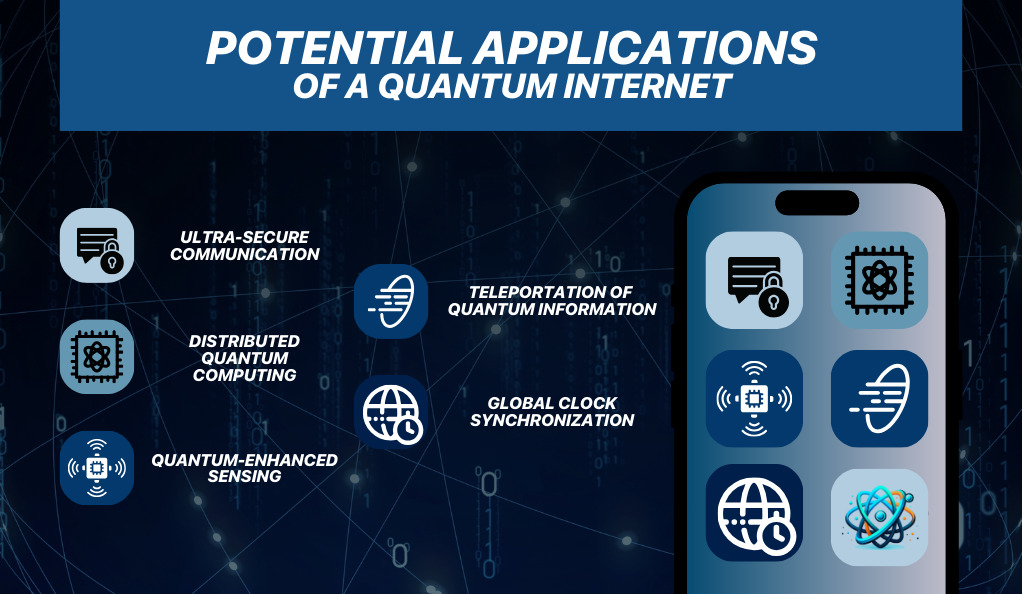
- Ultra-Secure Communication: Governments, financial institutions, and corporations can benefit from quantum encryption, ensuring that sensitive data remains confidential and secure from potential cyber threats.
- Distributed Quantum Computing: Industries requiring heavy computational power, such as pharmaceuticals, aerospace, and AI research, can tap into distributed quantum resources, solving complex problems faster than ever before.
- Quantum-enhanced Sensing: Precision measurements, crucial in sectors like geology, medicine, and environmental monitoring, can be significantly enhanced using quantum sensors interconnected through a quantum network.
- Teleportation of Quantum Information: While not teleportation in the sci-fi sense, the ability to transfer quantum states across vast distances can revolutionize fields like remote quantum computing and quantum-assisted robotics.
- Global Clock Synchronization: A quantum internet can facilitate ultra-precise clock synchronization, essential for global financial markets, satellite networks, and scientific research.
Current Projects and Advancements
Several projects worldwide aim to lay the groundwork for a quantum internet:
- Quantum Key Distribution (QKD) Networks: Countries like China, Canada, and several European nations have established QKD networks for secure communication. China’s Micius satellite, for instance, has successfully demonstrated space-based QKD.
- Quantum Internet Alliance (QIA): A European initiative aiming to develop a blueprint for a pan-European entanglement-based quantum internet.
- US Quantum Initiatives: The United States has invested heavily in quantum research, with projects like the Quantum Information Science Research Centers aiming to accelerate quantum R&D.
- Global Collaborations: International collaborations, like the satellite-based QKD experiments between China and Austria, highlight the global nature of quantum advancements.
The State of Quantum Network Development
While the vision of a quantum internet is clear, its realization is still in progress. Several cities globally have established short-distance quantum networks, showcasing the potential of quantum communication on a smaller scale.
However, long-distance quantum communication remains a challenge, especially when spanning continents. Innovations in quantum repeaters and satellite-based QKD are gradually addressing these challenges. As the technology matures, the integration of quantum networks with existing classical networks will be crucial, ensuring a smooth transition and widespread adoption.
Conclusion: Envisioning a Quantum Future
As we stand on the brink of a quantum revolution, the development of a quantum internet represents not just a technological advancement, but a testament to human innovation and collaboration. This paradigm shift, moving from the binary realm to the quantum world of superpositions and entanglements, promises to redefine communication, security, and global connectivity. With its potential to spur economic growth, reshape education, and influence policy, the quantum internet is poised to have a profound socio-economic impact.
The journey to this quantum future is a collective endeavor, necessitating global collaboration, public engagement, and ethical considerations. While challenges undoubtedly lie ahead, the promise of a connected quantum world is tantalizingly within reach. As we continue to innovate and dream, the horizon beckons with possibilities yet to be explored, heralding a new era of communication and computation.

